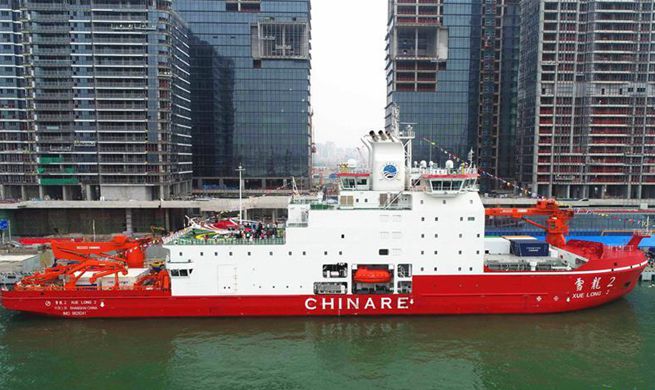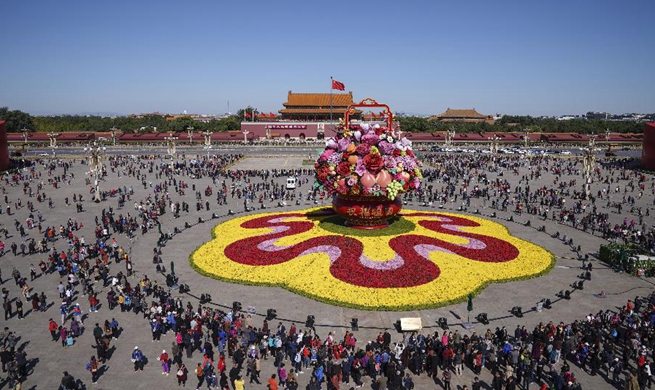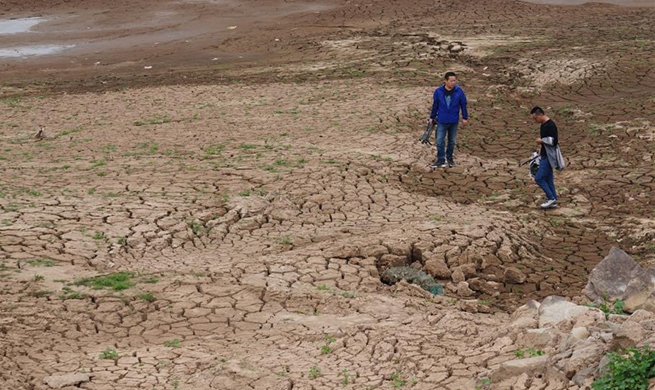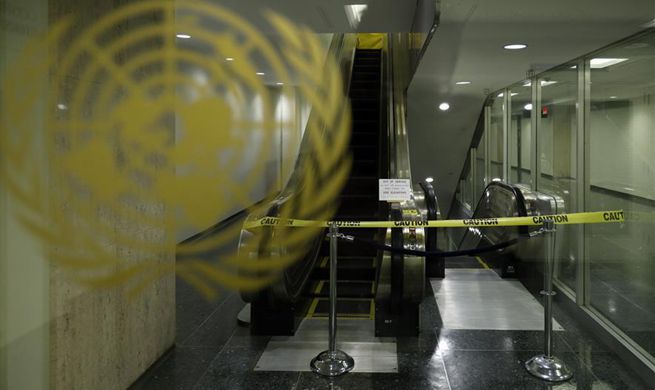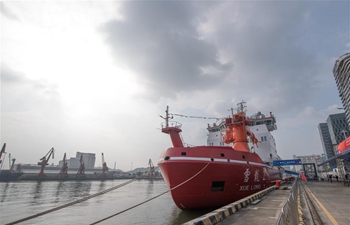TOKYO, Oct. 15 (Xinhua) -- More than a dozen people are still missing with emergency crews desperately searching for them on Tuesday in the wake of Typhoon Hagibis ripping through Japan over the weekend, causing widespread damage with the death toll rising to 68.
Utility firms have said it could take as long as one week before some homes are back on the grid and receiving electricity safely as blackouts continue to affect many areas in Japan.
Industry Minister Isshu Sugawara said earlier that as many as 34,000 homes were still without power, with 16,000 homes in hard-hit Chiba Prefecture and 12,000 in Nagano Prefecture still affected.
Water supplies have also been knocked out in some regions, with 133,000 homes across 13 prefectures still without running water, the health ministry said.
The powerful typhoon has also led to severe flooding, with failing levees affecting 47 rivers in 66 areas across Japan, with the situation compounded by emergency services still unable to gain access and conduct full assessments due to extreme flooding in some areas.
Japan's public broadcaster NHK said that including the Chikuma River in Nagano Prefecture, located north of Tokyo, the catastrophic typhoon caused at least 200 rivers to overflow, adding to widespread flood damage across wide areas.
Along with power and water supply issues, the typhoon also triggered 146 mudslides across the country, Japan's infrastructure ministry said, with muddy flood water inundating at least 10,000 homes.
At a disaster task force meeting convened on Tuesday, Japanese Prime Minister Shinzo Abe said the government will have access to reserve funds, and if deemed necessary will draft a supplementary budget to cover the immense amount of reconstruction work necessary in the wake of the extensive damage caused by Hagibis.
"It is urgent to provide adequate support for the victims. There are concerns that the impact on life and economic activities will be prolonged," the prime minister said in parliament.
As the government and rescue officials continue to assess the full extent of the damage, officials are warning people to continue to avoid swollen rivers and be vigilant for further landslides that could occur any time, but particular under rainy conditions.
More than 200 public schools remain closed for the day, including in Nagano, where the Chikuma River burst its banks, wreaking havoc in the area, local officials said.
An area of about 950 hectares, or 9.5 square kilometers, was flooded when Chikuma River burst its banks.
The flooded area stretches for about 5 km from north to south along the river, with the flooded area including residential areas in Hoyasu and a bullet train depot in Akanuma, both in Nagano City, local media reported.
More than 20 trucks have been deployed to the region to pump water out, particularly in the residential areas, local officials said.
Meanwhile, around 4,000 hectares, or 40 square kilometers, were inundated after river embankments collapsed after being pummeled by the strongest typhoon to hit Japan in many years along four rivers in the Kanto region, which includes Japan's capital city of Tokyo.
For the first time since the 2011 earthquake and tsunami disaster, Japan's defense minister said he is requesting that 200 reserve members of the Self-Defense Forces (SDF) join the existing 1,000 members to bolster numbers if necessary and help expedite rescue efforts as well as humanitarian ones, such as handing out water, food, blankets and other emergency supplies to the thousands who still remain displaced.
Transportation services have largely returned to normal, although disruptions on the Shinkansen bullet train services between Tokyo and Kanazawa will continue owing to numerous trains and carriages being inundated by floodwater in rail yard Nagano Prefecture.






